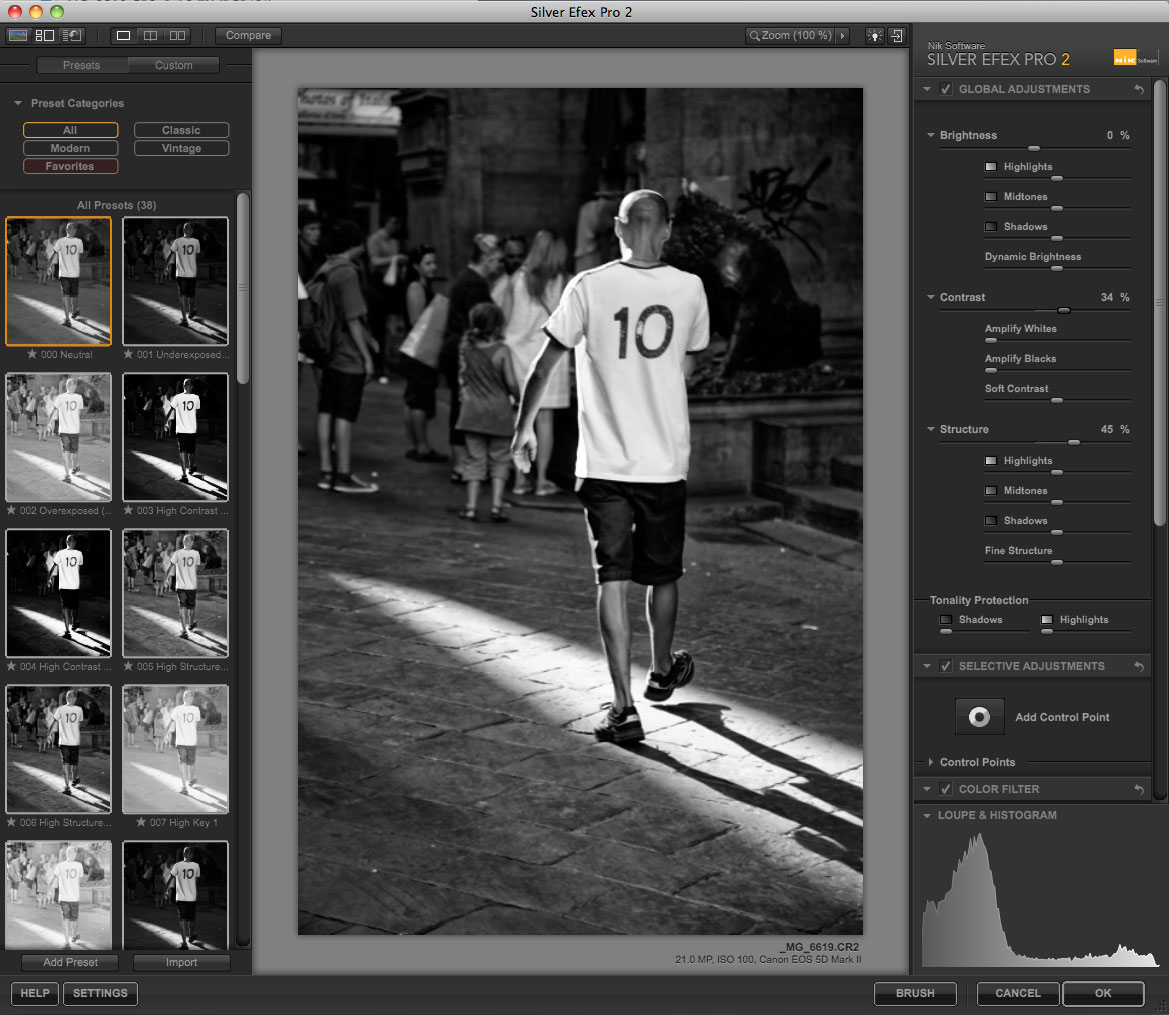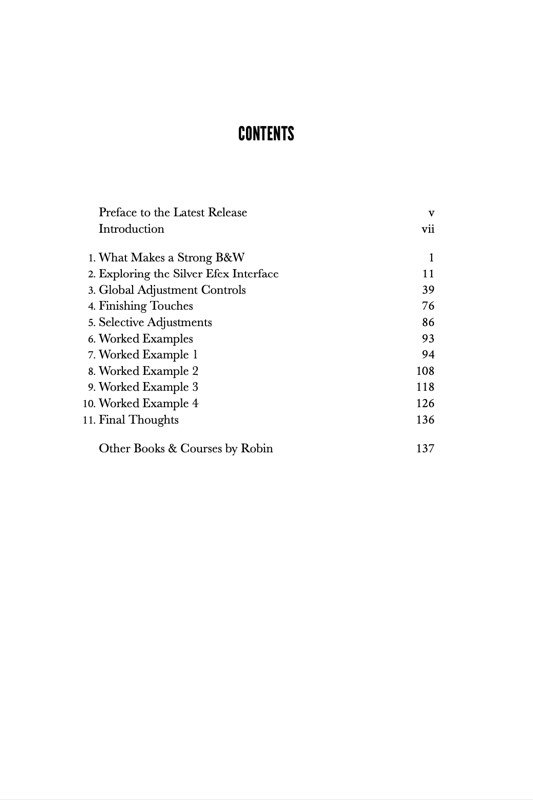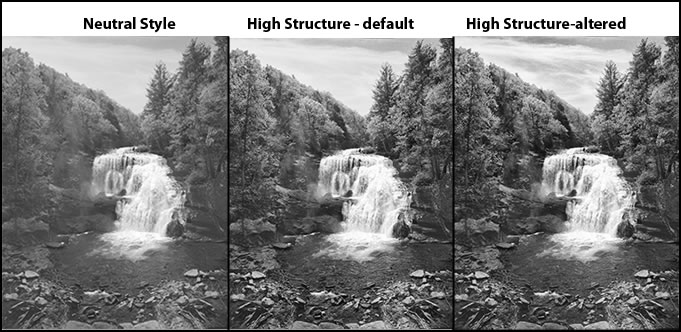

- Silver efex pro 2 examples how to#
- Silver efex pro 2 examples full#
- Silver efex pro 2 examples software#
- Silver efex pro 2 examples iso#
- Silver efex pro 2 examples plus#
I only shoot in camera Jpegs if by some case my wife wants a shot and given she has no interest B&W I don't use ACROS for the film simulation. I don't mess with the in camera simulation. In Silver Efex one can add filters, tweak the color balance to get multiple interpretations of ACROS and save those settings for a later time.īoth C1 and SE have multiple toning options.įor B&W I use either Capture One Styles or Silver Efex.
Silver efex pro 2 examples plus#
In my Capture 1 User Styles I have 5 different of ACROS - plus I can tweak the color balance after selecting one to emulate a filter. Type of filters used with the image was shot.

The Red filter, for example, can darken blue skies, while the Green filter lightens greens. Development dilution, agitation intervals and total time usedĥ. Somewhere in Utah Processed in Nik Silver Efex Pro 2. A print from the same base film say ACROS will have a different look depending on multiple factors to includeĢ. In film photography - the film is just the start. Has anyone taken the trouble to compare the ACROS file directly from an X-PRO2 with a file from any X camera processed through Silver EFEX Pro with the ACROS profile?Īny comments on the quality of the results? But there is so much data in the Fuji tonality it's worth having it all available for future important prints that could benefit. I know, many people don't want to do any PP, fair enough. You could always re-process the RAW in the camera if desired.
Silver efex pro 2 examples full#
I would recommend always shooting RAW + ACROS (jpeg) so that you have a master full data file to go back to in the future. The 8-bit jpeg immediately throws away over 90 percent of the shades/tones that were available from the sensor. The ability to push and stretch tonality in a B&W image has always been important, even in the darkroom days.

The other issue, at least for me, is the Fuji ACROS simulated files can only be saved as an 8-bit jpeg.
Silver efex pro 2 examples iso#
It's easy to set the grain controls to look like any ISO speed, and then just save the presets. All color filters are there, and curves, detail and contract can all be easily set. It has a control slider for "Grain per pixel" and a slider to control grain characteristics from Hard to Soft. The review above, for some reason, compared the Fuji ACROS version to the "Fine Art" preset in Silver Efex, when Silver Efex has an excellent dedicated ACROS film simulation with excellent controls built right in. But I find that Silver EFEX, using a converted RAW image, much more to my liking. The Fuji ACROS film mode is very nice for an OOC jpeg file. You can quickly undo changes by clicking on previous versions – this means your HDR images are essentially non-destructible.I've compared ACROS OOC files with Silver Efex Pro2. There is also a history tab which shows each change you have made to the image. After that, the HDR plugin itself appears to operate quickly and without delay. It isn’t the fastest we have used and the initial transition between DxO Photo Lab and HDR Efex Pro is a little slow. The HDR process itself is extremely easy to use – even if you don’t have experience with editing software, you can quickly understand how the process works.Ĭoncerning performance, the program works OK. It soon became apparent, however, that there is a Nik Collection button that allows you to access each of the Nik Collection plugins.
Silver efex pro 2 examples how to#
At first, we didn’t realize that HDR Efex Pro opened via DxO photo lab – this was a little confusing and we spent some time trying to find how to actually open the HDR software. Ease of Useįor the most part, this program is easy to use.
Silver efex pro 2 examples software#
The software also looks fantastic and has a clean, modern design. That is essentially it – the workspace is uncluttered, and you can easily find and use the different tools. The right pane contains the basic image editing tools. In the center is an image preview – this can be split into different views including a before and after preview.

The left pane contains image presets – it is split into categories and provides thumbnails of the different effects. The initial HDR creation process is a step-by-step procedure that you can’t get wrong.įurthermore, the main editing screen is simple and split into three main panes. Silver Efex Pro is Nik Software’s answer to a professional Black and White photography workflow, offering a wider range of options for controlling contrast, details, and creative toning than the standard tools offered in Photoshop, Lightroom, or Aperture. The basic layout of this program is extremely simple. This article is the second of five that focuses on plugins for Photoshop, Lightroom and Aperture. When creating this HDR Efex Pro review, we noticed that its basic features are a little sparse – it is not as detailed and in-depth as other HDR software like ON, or Aurora HDR. This is not an intense program – 4GB of RAM is quite minimal and any basic computer should be able to run this program smoothly.


 0 kommentar(er)
0 kommentar(er)
